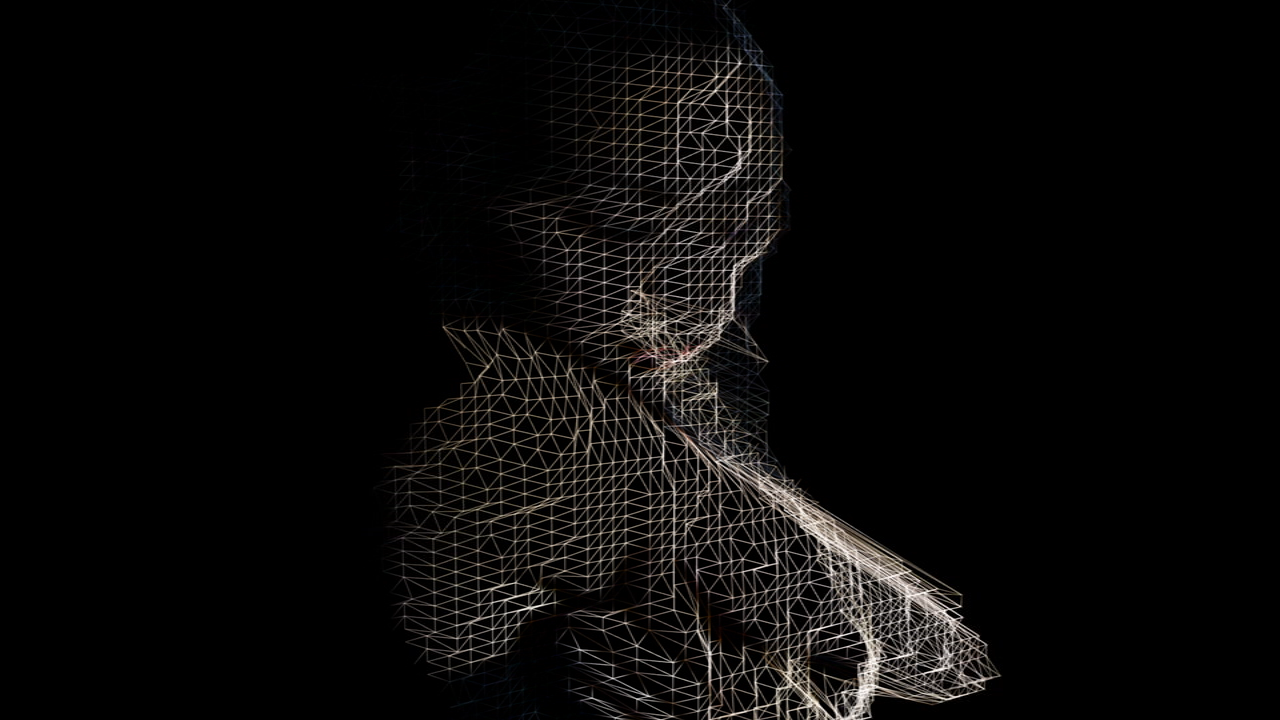Stills from In Limbo. Images courtesy National Film Board of Canada
French filmmaker and producer Antoine Viviani is known for directing music documentaries on REM and Arcade Fire, as well as for films on classical music and Europe's public spaces. In each, Viviani has made the documentary a medium for poetry, beyond just information.With his most recent film, In Limbo, Viviani pulls off a majorly experimental documentary about the Internet, examining how it redefines traditional notions of time, space and memory. To wit, it's an interactive experience that fuses viewer's internet data, 3D-scanned visuals, and 12 personalized interview sequences with figures such as futurist Ray Kurzweil and Paul Miller, a writer who was paid to disconnect from the Internet for an entire year.When viewers navigate to the In Limbo website, they're prompted to hand over personal data from their Gmail, Facebook, Instagram, Twitter and LinkedIn accounts, as well as their geolocation and webcam information. It's a bit disconcerting at first, but Viviani's artificially intelligent film—for lack of a better phrase—assures viewers that it will be immediately deleted upon navigation away from the site.
 Once this data is input into In Limbo, the experimental documentary begins. And this is where things really get interesting and dynamic. On their own, and if they had been filmed traditionally, the 12 interviews would be interesting enough. Each subject muses on their particular area of expertise, whether it's Internet pioneer Gordon Bell talking about e-memory, or Cathal Gurrin, the most digitized person on Earth, talking about capturing 12.5 million photographs on his “life logger” camera.Viviani, however, makes the inspired decision to augment the interview sequences with 3D-scanned visuals with what looks like the DepthKit ()formerly RGB+D toolkit, a tool that allows filmmakers to shoot futuristic 3D visuals with a Canon 5D camera and the Microsoft Kinect.) Viviani fuses this footage with other documentary footage and hyperactive montages, mirroring the overlapping character of the Internet's infinite imagery.
Once this data is input into In Limbo, the experimental documentary begins. And this is where things really get interesting and dynamic. On their own, and if they had been filmed traditionally, the 12 interviews would be interesting enough. Each subject muses on their particular area of expertise, whether it's Internet pioneer Gordon Bell talking about e-memory, or Cathal Gurrin, the most digitized person on Earth, talking about capturing 12.5 million photographs on his “life logger” camera.Viviani, however, makes the inspired decision to augment the interview sequences with 3D-scanned visuals with what looks like the DepthKit ()formerly RGB+D toolkit, a tool that allows filmmakers to shoot futuristic 3D visuals with a Canon 5D camera and the Microsoft Kinect.) Viviani fuses this footage with other documentary footage and hyperactive montages, mirroring the overlapping character of the Internet's infinite imagery.
 In Limbo inputs viewer's data in the form of collages of text and images, which appear on screen like little digital ghosts throughout the film's 30-minute running time. It's very strange indeed to see data from past and present float in Viviani's frames. Surprisingly, it does not distract, but rather enhances the viewing experience. What could feel like a series of TED talks becomes far more personal than it otherwise would be, forming an umbilical cord between conversations about the Internet and how we use it on a daily basis.
In Limbo inputs viewer's data in the form of collages of text and images, which appear on screen like little digital ghosts throughout the film's 30-minute running time. It's very strange indeed to see data from past and present float in Viviani's frames. Surprisingly, it does not distract, but rather enhances the viewing experience. What could feel like a series of TED talks becomes far more personal than it otherwise would be, forming an umbilical cord between conversations about the Internet and how we use it on a daily basis. Click here to learn more about In Limbo.Related:Walk, Run, and Fly Through Vincent Morisset's New Interactive FilmOculus Trauma: Inside Oscar Raby’s 'Assent'This Artist Turned Herself into a Corporation to Sell Her Data
Click here to learn more about In Limbo.Related:Walk, Run, and Fly Through Vincent Morisset's New Interactive FilmOculus Trauma: Inside Oscar Raby’s 'Assent'This Artist Turned Herself into a Corporation to Sell Her Data
Advertisement




Advertisement
